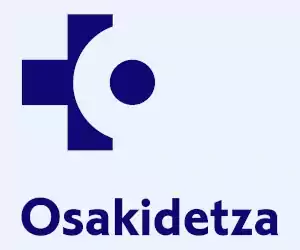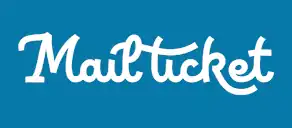How does a virtual waiting room work?
A virtual waiting room is a website page that is shown to users when a web server is too busy to serve them, that sends them through to the protected web server when it is their turn automatically. This optimizes customer flow and service quality.
A visitor arrives at your website or hits the link to enter, or uses your mobile app.
- If the site or mobile app is busy, the user is queued in a virtual waiting room away from your website and kept up-to-date with all the information they require to stay in the queue, including their queue position, estimated wait time, how many people are ahead of them, and an engaging animated progress bar to deliver a great experience—just like in physical waiting rooms.
- When they reach the front of the ‘first come, first served’ queue system, the user is sent back to your website by the queue management system automatically, admitted in a fair, first out order based on their arrival time.
- That’s the simple version of the customer experience. Here’s a bit more detail into what goes on behind the scenes in a queue management system.

1. We keep your websites safe from overloading, crashing, preventing a loss of income
The SafeGuard Rate Limit is the number of visitors your website can manage without putting stressful loads onto your single server or multiple servers and their systems. The SafeGuard Rate Limit is your web-traffic safety net. A virtual waiting room helps control website traffic inflow, particularly important during peak traffic periods and unexpected traffic spikes , such as a product launch. by regulating the number of online visitors accessing the site at any given time, ensuring your website remains stable even during high traffic sudden traffic surges and unexpected spikes.
Your Queue-Fair Portal allows you to measure your traffic volume in real-time, giving you vital customer data for your online retail stores and allowing you complete control of your Queue Rate (the number of visitors fed back to your website each minute by the queue management system waiting lines). This enables you to control traffic and maintain a smooth experience for all online visitors.
In SafeGuard Mode, your queue system is always active, but your visitors won’t know that until numbers exceed your SafeGuard Rate Limit. The way we measure user rates is the magic of our customer queue and has been since 2004. Traditional methods of measuring the number of active users are flawed, often producing inaccurate figures or leaving users stuck behind visitors who may never complete the transaction. This is an effective solution for maintaining site stability during high demand.
2. Queue Rate and SafeGuard Rate
Queue Rate controls the outflow of visitors to your website from the virtual waiting room.
SafeGuard Rate manages the inflow of visitors to your queue. This is also the activation threshold that determines when your Queue Page customer experience is shown for active users (when you have customers waiting).
During periods of high demand, new visitors may be redirected to a sample waiting room website, where they are managed until the main site can accommodate them, ensuring smooth traffic flow during high traffic periods and preventing server overload.
Outflow rate and inflow threshold are measured in visitors per minute to your website and typically set at the same quantity by default in queue management systems.
The benefit of having two separate rates means if you’re transferring visitors from one site, your main website for example, to another where your booking or buying system operates, it’s quite possible that they have different limits to how many users they can manage at any given time. By setting your inflow and outflow rates accordingly, you choose precisely when the queuing system automatically takes effect in the most cost effective way, maximising operational efficiencies by providing a steady and measured customer flow to the payment site. This guarantees the optimum visitors to your sales and bookings area at the rate it can operate the most efficiently, delivering the great experience that your customers want as part of their customer journey to the most people that it can in real time.
A sample waiting room can be used to demonstrate the system's features, such as traffic management, load balancing, and real-time communication, helping stakeholders understand its capabilities and how to control traffic effectively .


3. Setting up your queues
Setting up a standalone queuing system takes two simple steps: configuration and integration of the queue management system. Virtual waiting room software enables the creation of virtual queues, providing great support for a seamless online waiting experience by utilizing virtual waiting room software to manage high website traffic and ensuring fair, transparent access for all users. We’ll talk about integration adapters in section 6.
This approach also delivers virtual care by efficiently managing users during high demand, preventing server overloads, and mitigating downtime costs while aintaining a smooth user journey.
Activating a queue
Activating a queue is a simple process governed by defined rules. If you’ve ever applied rules within your email software, or used Google Tag Manager, you’ll already feel comfortable with our standalone queue system.
The activation rules can be dictated by the domain, a path, a query-string, or cookies detailing visitor’s page visits. These rules determine when users are accessing the site and need to be placed in the queue. Once all of the rules deliver a match, the user drops into the queue.
How many queues do you need?
This depends on the architecture of your site or sites and their bottlenecks.
If you have separate sites using different machines, you’ll need multiple queues and virtual waiting rooms which may have different waiting times within the same queue system. If, on the other hand, you have several webservers drawing from a single database machine, then a single queue should be all you need.
The other factor in play is what the business requires from its queue. This can cover a range of eventualities.
- A simple safeguarding solution to protect busy websites and server performance, especially during high demand situations such as product launches, ticket sales, and popular events.
- When serving the same content to differently branded domains or in different languages.
- You have allocated VIP status to visitors you want to receive the fastest service.
- Various campaigns run from the same set of machines, using different brands, countries, or promotions.
- Specific events that require their own queues and virtual waiting rooms, such as high demand events, high demand ticket sales, and scenarios where customers want to buy tickets. These situations often require dedicated queues to ensure fairness and manage large surges in traffic.
Customising your queues to brand the waiting room experience
As with all of our deliverable pages and queue displays, customisation is simple and straightforward with our queue management system. Branding, colours, and text are only the start. By customizing the waiting room experience, you help build customer trust and ensure that the biggest benefit is a fair customer experience for everyone, similar to physical waiting rooms especially during peak traffic events, ensuring your system can handle the load. Clear communication and consistent branding throughout the queue can lead to reduced frustration for users, making the process smoother and more transparent. We give you access to the HTML code so you can take as much control over the look and feel as you want for a complete enterprise solution. With Queue-Fair you can provide fully branded customer journeys through your waiting lines with the highest service quality - it’s the perfect queuing system.
4. Joining a queue
Joining a queue is managed by the inflow and integration method: server-side adapter, client-side JavaScript adapter, or by direct link. You can combine these methods to cover multiple means of access to the queue management system, for all your customer journeys.
For example, a direct link from an email campaign and a server-side adapter on your website can drive users to the same queue, for a consistent customer journey. You can even use client-side and server-side adapters on the same page!
5. Leaving a queue
Visitors leaving a queue or joining the site directly without seeing a Virtual Waiting Room (Queue Page) are labelled as Passed. Passed visitors don't stay that way forever. They receive a passed string or a cookie from the sample waiting room virtual queuing system. with a given lifetime that you decide. This protects them from having to re-join a waiting room they've already been through while allowing you the ability to have them join the same waiting room on subsequent visits in the future, for an improved customer journey.
6. Network-Edge, Server-side and client-side adapters
Network-edge adapters run on your CDN or Cloud provider, before requests even reach your origin server - ideal and secure protection against a surge of active users when things get busy. You can install the Network-edge adapter just once and then fully administer your queues with the Queue-Fair Portal.
Server-side adapters require a small amount of library code installed on the webserver. This code downloads and stores the Queue-Fair settings you decide and set up using the Queue-Fair Portal. The code manages HTTP requests for the pages on your site, redirecting visitors to our Queue-Servers whenever they qualify.
A client-side adapter requires no server-side code, but a simple single line of HTML code added to the
section of the desired web pages. However, a visitor with advanced technical skills can disable JavaScript, which provides a route to jumping queues. It makes little difference to most customer flows in practice, as the estimated wait time percentage of users with such knowledge to affect the queue system is so low. That said, where security is a priority for your queue system, we'd always suggest adopting one of our security models, utilising its secret keys as protection.
7. Direct links
A direct link sends a visitor straight to the queue they need to join on their customer journey. If fewer visitors arrive in the queue system than the SafeGuard Rate, they are sent directly to the target page without ever seeing the Queue Page.
If you’d like even more information, get a copy of our Technical Guide that describes the Queue-Fair queue system in full
Despite labelling this article as a deeper-dive into our standalone queue system, we have to admit it's barely scraped the surface. There's only a limited amount of information we can deliver in one short article on traffic and sudden spikes related to an online queue, including how do virtual waiting rooms work . and Virtual Waiting Room queue management system, after all. The details provided in this article are merely a summary of our Queue-Fair Technical Guide.
You can download a full copy of the guide from our website. If you’re considering joining the Queue-Fair family for access to our full features , we’d heartily recommend it.
There's a host of information that will put both beginners' and tech-experts' minds at rest, giving you the confidence that with the Queue-Fair queue management system in place, your systems are safe from overloading and costly losses from system crashes, without needing additional servers. because of our queue management technology. Our support staff will be happy to provide any other resources into our queue management technology and services you may need—get in touch with our office by any of the usual contact methods.
There's a host of information that will put both beginners' and tech-experts' minds at rest, giving you the confidence that with the Queue-Fair queue management system in place, your systems are safe from overloading and costly losses from system crashes because of our queue management technology. Our support staff will be happy to provide any other resources into our queue management technology and services you may need—get in touch with our office by any of the usual contact methods.































